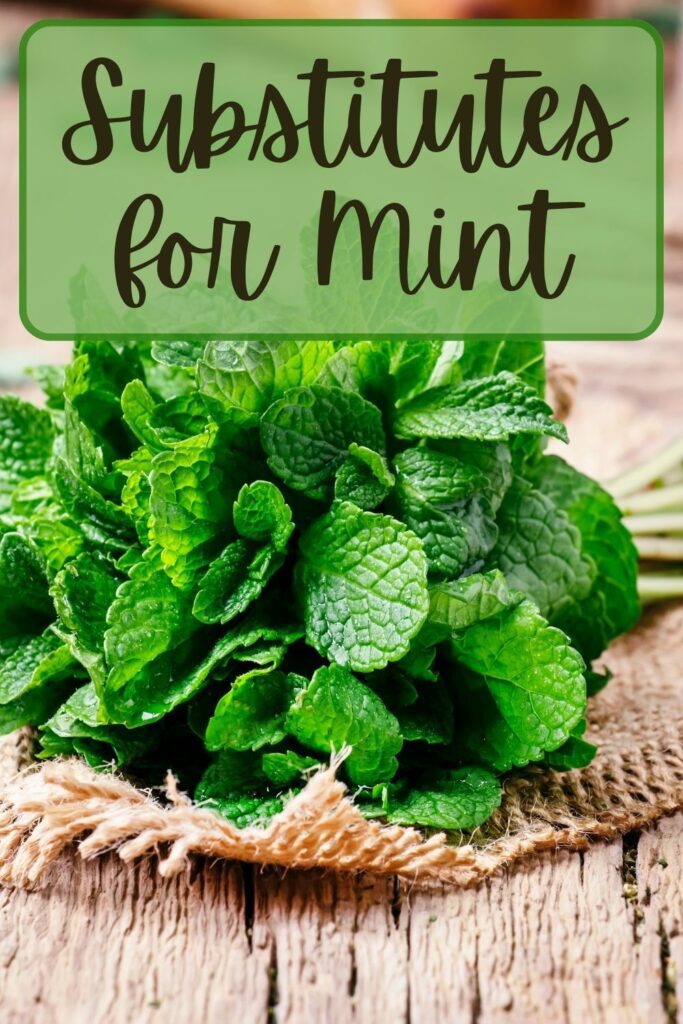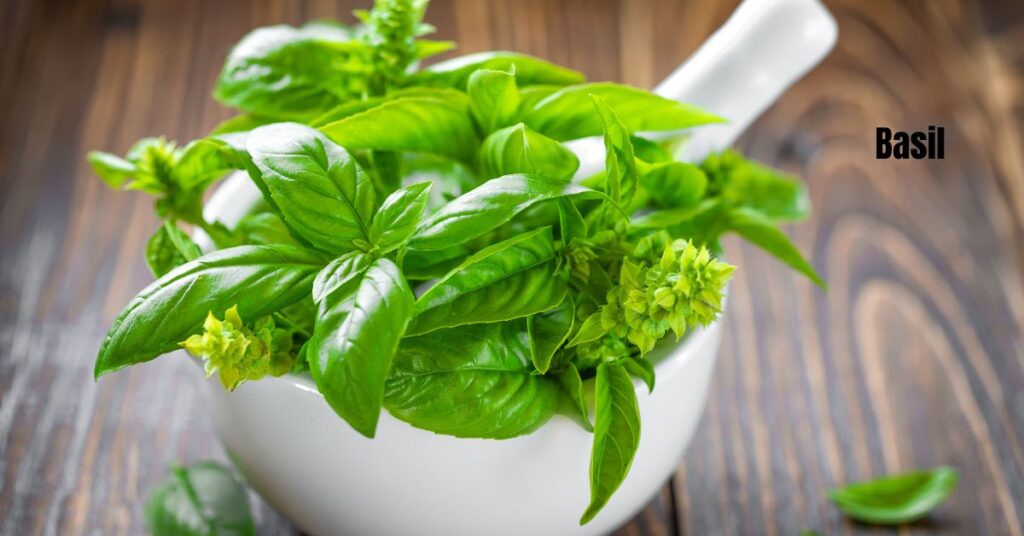6 Best Substitutes for Mint
Looking for the best substitutes for mint? Check out my favorite herbs to replace mint in recipes.

Mint is a versatile herb that adds a refreshing kick to a wide range of dishes and beverages. Whether you’re making a classic mojito or my delicious strawberry mojito mocktail, a savory lamb dish, or a refreshing cucumber salad, mint can elevate the flavors and provide that delightful burst of coolness.
But what if you find yourself out of mint or simply want to try something new? Fear not! In this blog post, we’ll explore some fantastic substitutes for mint that can add a unique twist to your culinary adventures.

too busy to make it?
pin it for later to your favorite pinterest board
Dried Mint vs. Fresh Mint
First things first, when making the switch from fresh to dried mint, you’ll need to remember that dried herbs are more concentrated in flavor. This means you won’t need as much dried mint as you would fresh. As a general rule of thumb, you can use about one-third to one-half the amount of dried mint called for in your recipe. For instance, if your recipe calls for one tablespoon of fresh mint, you can substitute it with approximately one to one-and-a-half teaspoons of dried mint.

Now, let’s talk about how to use dried mint effectively in your recipes. Dried mint is particularly well-suited for dishes with longer cooking times, like stews, soups, and sauces. Simply sprinkle the dried mint into your dish, and as it simmers, the dried mint will rehydrate and release its flavor. I wouldn’t recommend using dried mint to replace fresh mint in recipes where you are looking for the fresh look of the mint leaves like my Strawberry Mojito Mocktail.

Ultimately, substituting dried mint for fresh mint is a versatile option that allows you to enjoy the refreshing taste of mint year-round. So, don’t let the absence of fresh mint deter you from your culinary adventures. Embrace the convenience and versatility of dried mint, experiment with it in your recipes, and savor the delightful flavors it brings to your dishes. Happy cooking!
Substitutes for Mint
If dried mint isn’t an option either for aesthic reasons or you just don’t happen to have any on hand, here are a few of the best fresh substitutes for mint.
Basil – Aromatic and Fresh
When it comes to fresh, vibrant flavors, basil is a fantastic mint substitute. Its slightly peppery and sweet notes can mimic the coolness of mint while imparting a unique twist. Basil works well in salads, pasta dishes, and even in cocktails. Try a basil-infused mojito for a refreshing change of pace.

Cilantro – A Zesty Option
Cilantro, also known as coriander leaves, brings a zesty and citrusy flavor that can replace mint in many recipes. It’s a staple in Mexican and Thai cuisine, adding a burst of freshness to salsas, guacamole, and curries. I love using it in my carne asada marinade, Mexican elotes, and shredded beef chimichangas. If you’re making a mint-based chutney or sauce, cilantro can be a vibrant alternative.

Lemon Balm – A Close Cousin
Lemon balm is a herb that’s closely related to mint, and it has a mild lemony flavor with subtle mint undertones. It’s an excellent choice for teas and desserts where you want a touch of minty freshness with a lemony twist.
Lemon balm can also be used as a garnish for cocktails and fruit salads. Lemon balm also has a very similar look to fresh mint making it one of the best substitutes for mint in appearance.

Tarragon – An Anise-Like Flavor
Tarragon is another herb that can step in for mint in certain recipes. It has an anise-like flavor with a hint of sweetness, making it a great addition to poultry dishes, salad dressings, and sauces. A tarragon-infused simple syrup can be a delightful alternative to traditional mint syrup in cocktails.

Peppermint – A Minty Sibling
If you have peppermint on hand, it is obviously one of the best substitutes for mint. Peppermint is part of the mint family and offers a similar cool, refreshing flavor. It also has a similar appearance making it great if you are using mint as a garnish.
You can use peppermint leaves in teas, desserts, and savory dishes like lamb. Just keep in mind that peppermint can be more potent than regular mint, so use it sparingly.

Rosemary – A Bold Choice
For a unique and bold twist, consider using rosemary as a substitute for mint. It has a strong, woody flavor with piney undertones that work well in roasted meats, potatoes, and bread. You can also create a rosemary-infused simple syrup for cocktails or mocktails with a distinctive flair.

Conclusion
While fresh mint is undeniably wonderful, there are plenty of substitutes that can infuse your dishes and drinks with exciting new flavors. Experimenting with basil, cilantro, lemon balm, tarragon, peppermint, or rosemary can lead to delicious discoveries in your kitchen. So, the next time you’re out of mint or looking to add a twist to your favorite recipes, don’t hesitate to try one of these fantastic substitutes for mint. Be sure to check out my best substitutions for asparagus as well! Happy cooking!






